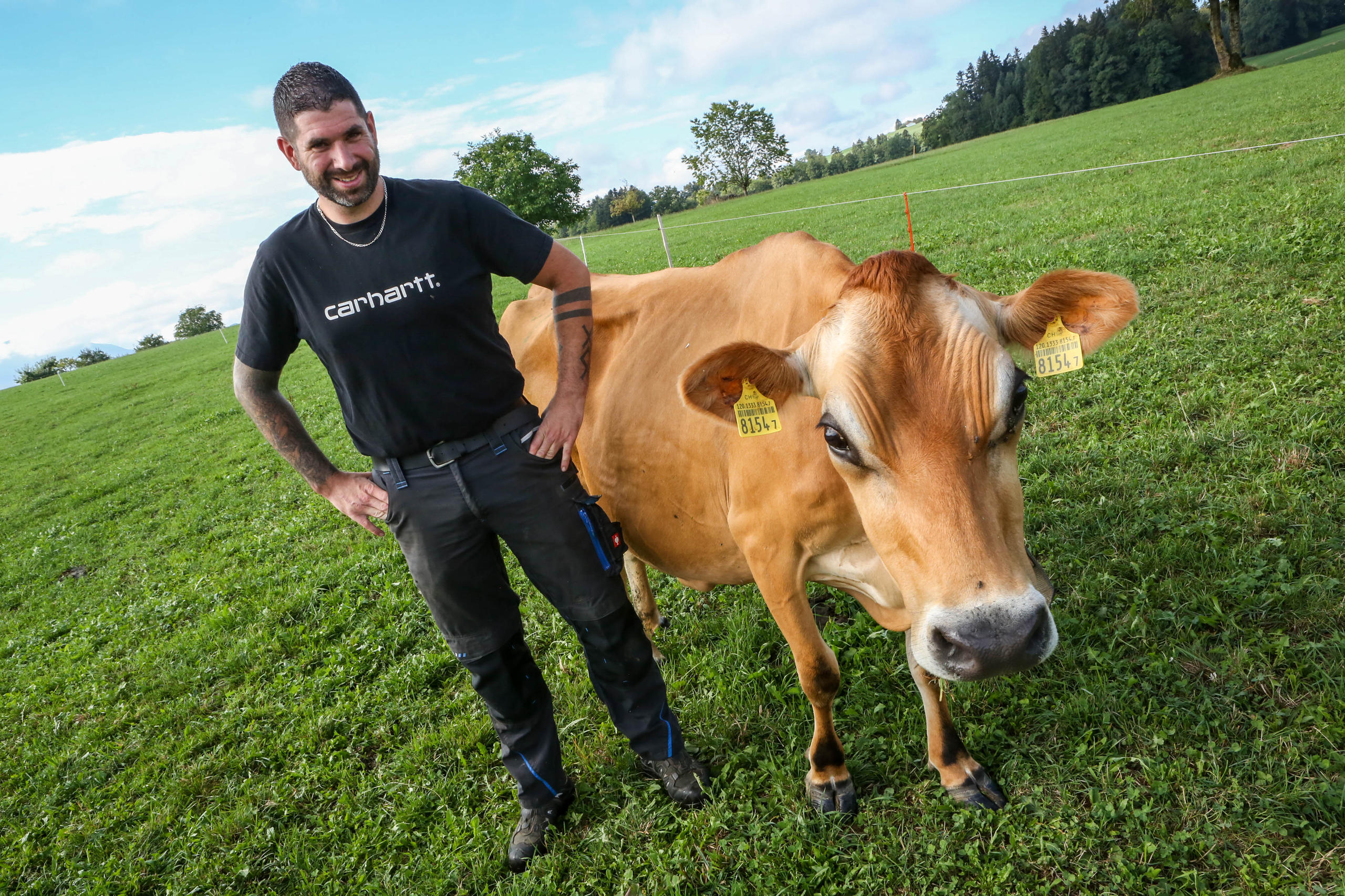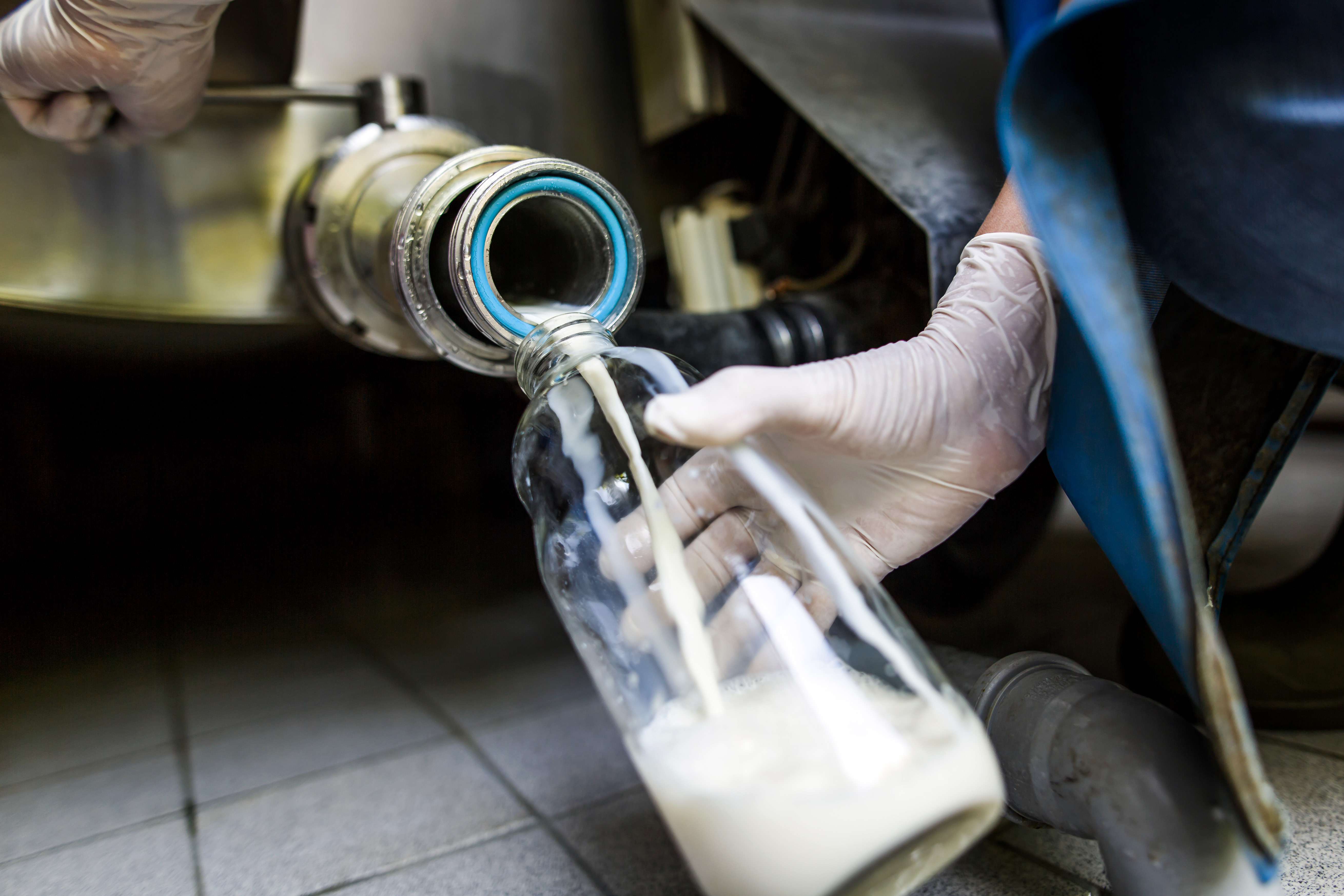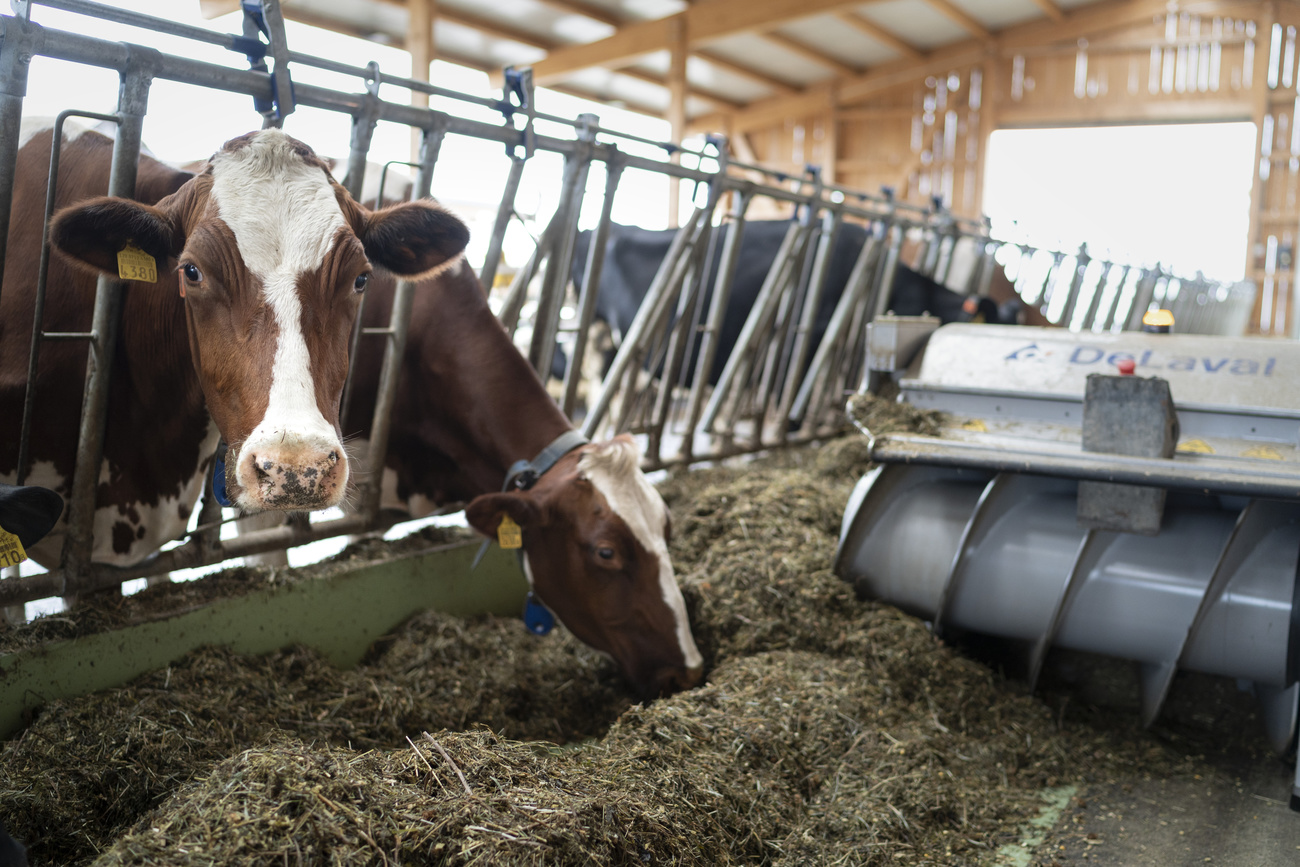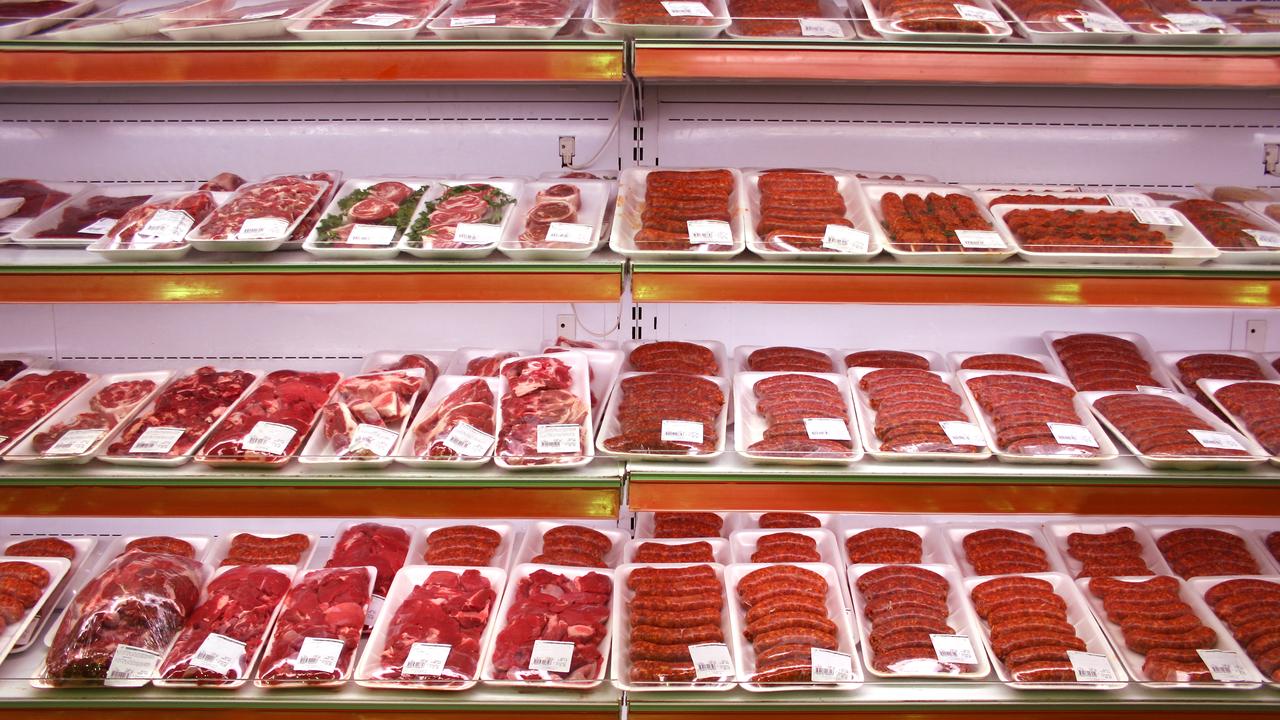Are food firms’ efforts to reduce cow fart emissions a lot of hot air?

To reduce their carbon footprint, food companies are betting on cow feed that produces less methane. Consumers still need some convincing that their milk remains safe to drink.
Food companies like Nestlé are finding their dependence on cows to be an obstacle to their emission reduction commitments. Dairy is Nestlé’s biggest raw material by volume and accounts for 21% of the company’s total emissions.
According to the Food and Agricultural Organization (FAO), there are almost 1.5 billion cattle in the world. Together they are responsible for generating 6.2 gigatonnes of CO2 equivalent emissions annually (of which 3.6 gigatonnes are direct emissions) or about 12% of all greenhouse gas emissions. Most of the climate damage is caused by the release of methane from cow burps (not cow farts) generated during fermentation in the bovine’s multi-chambered stomach.
Firms such as Nestlé or Syngenta have come up with innovative solutions to reduce methane by introducing additives – artificial or natural – to the feed cows eat. While it’s difficult to measure real impact, potentially these innovative solutions could have a positive effect on reducing global greenhouse gas emissions.
Cattle feed the answer?
Nestlé is working on its dairy Achilles’ heel to reduce its greenhouse gas emissions. By the end of 2023 almost half of its milk derivatives by volume were covered by interventions such as “deforestation-free and low-carbon feed supply chains, optimised diets and improving animal well-being”.
One such low-carbon feed intervention used by Nestlé dairy suppliers is Bovaer, which is produced by Dutch-Swiss bioscience and fragrance firm DSM-Firmenich. Made up of a synthetic chemical called 3-Nitrooxypropanol or 3-NOP, Bovaer claims that just a quarter teaspoon per cow per day reduces methane emissions from dairy cattle by 30% and up to 45% for beef cattle, on average. This is done by supressing the enzyme that combines the hydrogen and carbon dioxide from digested food to produce methane.
Despite a positive outlook for the environment, consumers still need some convincing, however. Some have raised concerns that any additives to cows’ nutrition could end up in dairy products and have negative impacts on their health, including cancer.
Fears have spilled over onto social media. A post on X (formerly Twitter) announcing a trial of Bovaer in partnership with British supermarkets received thousands of comments from users worried about the potential risks of a chemical in their milk and meat.
We have just announced a new project with @MorrisonsExternal link, @TescoExternal link and @AldiUKExternal link to trial the use of feed additive, Bovaer® on ~30 Arla farms. Bovaer® can reduce emissions from cows by 27%, and this represents an amazing chance to reduce emissions on farm. #agricultureExternal link #climateExternal link pic.twitter.com/XaGmopwVJgExternal link
— Arla Foods UK (@ArlaFoodsUK) November 26, 2024External link
According to Grok, the artificial intelligence chatbot developed by X, 90% of comments on the post are negative.
The same chatbot says that approximately 85% of all X posts about Bovaer are negative, reflecting widespread public concern and skepticism in the United Kingdom and beyond since Arla Foods UK’s November 2024 announcement of its trial with supermarkets like Tesco, Morrisons, and Aldi. The negative feedback forced DSM-FirmenichExternal link and the British Food Standards AgencyExternal link to issue clarifications that the 3-NOP was metabolised by cows and did not end up in milk.
“All our dairy products are safe for consumption,” a Nestlé spokesperson told SWI swissinfo.ch by email. “UK, EU and US food safety authorities have approved Bovaer and consider it safe for use and effective in reducing emissions”.

More
Swiss farmers trial methane-busting feed for cows
“Reactions to Bovaer remind me of the backlash against the use of synthetic growth hormones in cattle in the United States in the late 1990s and early 2000s,” says Mutian Niu, a professor in animal nutrition at the Swiss federal technology institute ETH Zurich.
Niu has been working on the impact of Bovaer and more natural additives on humans and cows.
While he emphasises the importance of scientific evidence and cautions against misinformation, his work does raise questions about its efficacity in reducing methane emissions. A study he co-authored in 2024External link indicates that Bovaer may be less effective in some cow breeds. While the greatest effect was observed in Holstein Friesian cows, a large breed of black and white cows originating in the Netherlands, it was much less effective in Brown Swiss cows, a light-brown sturdy breed that originated in Switzerland.
“High fibre content reduces the mitigation efficacy of Bovaer, additionally, as it is generally higher in cow feeds in Switzerland than the average used in other studies,” says Niu.
Another recent review article, of which he is co-author, has also shown that mathematical models that calculate emissions reductions of feed additives have shown different resultsExternal link for 3-NOP and other additives like seaweed or blends of essential oils. Obviously, dosage and frequency of consumption by cattle can affect results but other factors can also result in variable outcomes: for example, whether it is a beef or dairy animal, growing or lactating, confined or grazing in a pasture, and the forage to concentrate ratio, all of which vary locally and globally. Then there is the question of whether these additives will be as effective if used long-term, such as over the lifespan of dairy cows.
“Some feed additives could potentially create adaptations and resistance in gut microbes,” says Niu.
Other alternatives
Swiss-based and Chinese-owned agricultural company Syngenta has gone a different route in developing its methane-reducing cow feed. It has developed what it calls Enogen corn, which contains alpha amylase enzyme in the kernel. This makes the starch in the feed more digestible.
“It is the same as when you eat French fries. Salivary amylase works on the starch,” says Christopher Cook, head of Enogen Business Solutions at Syngenta Seeds.
This shortens the time needed to prepare cattle for beef production, thereby ensuring they release less methane per unit of meat produced. The company claims about a 5% improvement in feed efficiency, which could equate to 196 tonnes of greenhouse gas reductions annually per 1,000 head of beef cattle.
“Beef cattle fed Enogen would require 12 days less on feed to reach target weight, which could add up to significant savings per animal. It is about doing more for less,” adds Cook.
Last November, Syngenta announced a partnership with fast food chain McDonaldsExternal link to feed Enogen corn to cattle raised by their supplier Lopez Foods. However, it is unlikely that food companies outside the US will embrace Enogen, given that it is genetically modified corn, which is highly regulated in other parts of the world.
In Switzerland, only one variety of genetically modified soybean and three varieties of maize are authorised as animal feed and these approvals date back to the 1990s, before the law regulating genetically modified organisms came into force. The European Union, which has also been resistant to such livestock feeds, approved two new genetically modified maize varieties last year for cattle feed. However, these approvals are only for imports for a ten-year period and these crops cannot be cultivated in the EU.

More
Raw milk: regulatory loophole gives Swiss the freedom to skip pasteurisation
Less problematic feed additives exist, like linseed and hazel leaves, but they do not reduce methane to the extent of Bovaer and may affect milk yield when fed to dairy cows. Other promising natural additives, such as the seaweed Asparagopsis, contain the organic compound Bromoform, which can have a negative effect on cow health. Some scientific studies have flagged inflammation in cows’ stomachs and the presence of residues of potentially toxic bromoform in cow urine and milk. As the Climate Cow gameExternal link developed by Niu’s department at ETH Zurich shows, there are potential trade-offs between methane reduction, milk production and animal welfare.
Despite the misinformation surrounding feed additives like Bovaer, Nestlé will continue to rely on methane-busting cattle feed. The Swiss food multinational aims to reduce its greenhouse gas emissions by 20% by 2025 and by 50% by 2030 compared to 2018 levels, and to eventually reach net zero by 2050 at the latest.
“We will continue to work closely with farmers and explore new technologies and tools, such as scientifically approved feed solutions, to help reduce methane emissions in the dairy supply chain as part of our net-zero roadmap,” says the Nestlé spokesperson.
More
Edited by Virginie Mangin/gw

In compliance with the JTI standards
More: SWI swissinfo.ch certified by the Journalism Trust Initiative










You can find an overview of ongoing debates with our journalists here . Please join us!
If you want to start a conversation about a topic raised in this article or want to report factual errors, email us at english@swissinfo.ch.